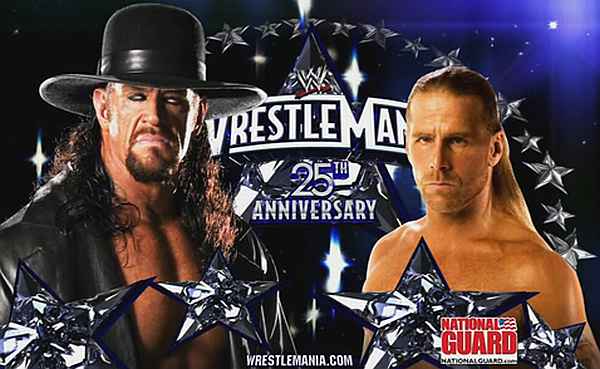Is pro wrestling art?

We went to WWE Smackdown here in Phoenix on Tuesday night, and had a thoroughly good time – over four hours of entertainment, accompanied by pyrotechnics so loud they had Chris covering her ears. The televised main event saw straightedge bad-guy champion CM Punk (left) beat fan favourite Matt Hardy, in a ‘loser leaves WWE’ steel-cage match. The result wasn’t a surprise to us – previous events had made it fairly clear Punk would be fighting the iconic Undertaker at the next pay-per-view, so it seemed very unlikely he’d lose. But when we watched the show on TV on Friday, we were surprised to see some fans in the audience crying after Hardy lost.
Now, it’d be easy to mock those fans, going the cheap route and rolling out the tired old cliches about them not believing that wrestling is staged [I use that word carefully, and would never call wrestling “fake” – especially not the same week a wrestler we know died, apparently the result of taking too much pain medication]. However, that would also mean those who cry at sad movies should be similarly criticized for failing to distinguish reality from entertainment: despite what Titanic might say, Leonardo DiCaprio is not really dead. A capacity to produce the emotional reaction desired by the creator is one of the key definitions of an art-form, even if that emotion perhaps comes from the lizard part of the brain, such as when you get 15,000 people to chant “You suck!” in unison.
It’s somewhat similar to the long ongoing debate about whether video games should considered as ‘art’ or not, which has been a topic for discussion since Jack Kroll wrote in a 2000 issue of Newsweek that “Games can be fun and rewarding in many ways, but they can’t transmit the emotional complexity that is the root of art.” That was almost a decade ago, and technology has certainly advanced massively since. However, many remain unconvinced: there’s an interesting debate between Roger Ebert and Clive Barker on this topic, and I do have to say, I have never had any significant reaction to a video-game. A certain poignancy in the middle of Final Fantasy VII; some slight dread while engrossed in Doom. Then again, I have never had any significant reaction to sculpture either.
Computer game designer Tim Schafer said, “Art is about creatively expressing thoughts or emotions that are hard or impossible to communicate through literal, verbal means,” and that’s a definition that could well be applied to the largely non-verbal world of professional wrestling. Sure, the cutting of a promo is part of the medium, but it’s what happens after the bell rings that really matters. Then, you’re watching a morality play unfold, a struggle between good and evil for supremacy – though evil may triumph over good, or ‘normal’ notions of what is “good” may be reversed. See Punk vs. Hardy for an example: Punk doesn’t smoke, drink or abuse medications, but by putting across a “better than you” in-ring persona, he has become the ‘heel’.
Like all media, it’s probably necessary to accept that there is a spectrum in effect. Not all films can be truly considered as art – or at least, successful art. Movies like Plan 9 From Outer Space certainly provoke emotions in the viewer, but you can’t really claim that Ed Wood was aiming for derisive laughter in his audience. Similarly, you can’t lump together all pro wrestling as a whole, but need to accept that there is good and bad. You also need to realize that no match happens in isolation: they are pieces in a carefully-constructed storyline laid out episodically over the preceding weeks and months. Like any good soap opera, the more you watch, the more you get out of it. The casual viewer simply won’t be able to appreciate it anywhere as much.

An example of the best kind of wrestling would be the match at the last Wrestlemania, in Houston, between the Undertaker and Shawn Michaels (left and right respectively, above). A knowledge of the back-history involved was crucial. Undertaker had a remarkable record of 16-0 in previous Wrestlemanias [sure, we’re talking pre-determined results, but the mere fact that he has been deemed a credible winner every time since his debut in 1991, is still hugely impressive] On the other hand, he had never beaten Michaels, one-on-one. We’re also talking two of the most unquestionably charismatic performers in the field – I’m not sure why WWE have never tried to use Undertaker in a horror Western, as he’d be perfect.
Their struggle on this night was a marvelous example of story-telling through physical theatre, the pace of the encounter ebbing and flowing over forty minutes as well as any movie could hope to do, even though there were no titles at stake here. It built to a crescendo where each man pulled out their signature moves, only to see the opponent refuse to succumb. Finally, the Undertaker delivered a second Tombstone Piledriver [a move you’d better hope is staged, because if you don’t do it right, you will break someone’s neck] and took the victory, running his Wrestlemania record to 17-0.
Britannica Online defines art as “the use of skill and imagination in the creation of aesthetic objects, environments, or experiences that can be shared with others.” If not a classical art, there’s no doubt that, by this definition, professional wrestling qualifies: the skill involved certainly cannot be questioned, and if the imagination shown in the storylines is occasionally…well, let’s just say ‘somewhat excessive’, it’s equally undeniable. If you want a shared experience, then a wrestling show is more interactive and less passive than almost any other. Indeed, without the fans there would be no show; the spectators become part of creating the art, their reactions becoming part of the collective artistic experience.
Wrestlemania 26 comes to Phoenix next March. I’m not expecting any art critics from the local papers to attend alongside us, but it’s going to be an experience which we certainly wouldn’t miss for anything.
TC: Article Zone » Blog Archive » Wrestlemania 26: An eye-witness review
[…] as previously argued, wrestling has the potential to be art, then Wrestlemania is its Hermitage, Louvre and Guggenheim […]